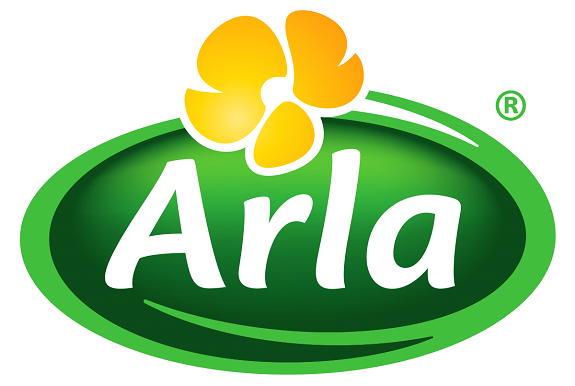Sustainable Packaging: Attracting Top Talent in CPG
Sustainable packaging has moved from a niche concern to a central priority in the consumer goods industry. Companies are innovating with eco-friendly materials and designs to reduce environmental impact, driven by mounting pressure from consumers, regulators, and investors. At the same time, organizations recognize that achieving ambitious sustainability goals requires strong leadership.
The challenge is twofold: developing innovative packaging solutions while attracting and retaining the talent needed to drive these initiatives forward. As the competition for sustainability expertise intensifies, companies must adopt strategic approaches to recruitment that align with their environmental commitments.
This article explores current sustainable packaging innovations and the growing importance of sustainability in consumer goods packaging. We'll also examine how companies can attract director-level and senior leaders passionate about environmental responsibility—focusing on U.S.-based practices while integrating global insights.

The Rise of Sustainable Packaging in Consumer Goods
Consumer Demand Driving Change
Consumers increasingly prefer products with eco-friendly packaging, influencing their purchase decisions and brand loyalty. In one U.S. survey, 90% of consumers said they are more likely to buy from a brand if its packaging is sustainable. Over half (54%) reported consciously choosing products with sustainable packaging in recent months, and 39% have even switched to a competitor because it offered sustainable packaging.
NielsenIQ research found 92% of shoppers consider sustainability important when selecting a brand. This consumer pressure means brands risk losing market share if they ignore packaging sustainability. On the flip side, companies that lead in sustainable packaging often enjoy higher brand loyalty and differentiation in the market.
Regulatory and ESG Pressures
Governments and regulators worldwide are imposing stricter rules on packaging waste, recyclability, and materials. The EU's Circular Economy Action Plan and similar regulations are reshaping standards globally. In the U.S., states such as California and Maine have enacted extended producer responsibility laws that hold companies accountable for packaging waste.
Globally, there is talk of mandates for reuse/refill systems (France has begun mandating reusable packaging in some cases) and bans on certain single-use plastics. At the same time, investors and shareholders are prioritizing Environmental, Social, and Governance (ESG) criteria – including packaging impacts.
All these stakeholders are putting immense pressure on brands to address packaging's environmental footprint. Failing to act can invite regulatory penalties and reputational damage, whereas proactive companies can stay ahead of compliance requirements.
Corporate Sustainability Commitments
Nearly every major consumer goods firm has made public sustainability commitments that include packaging targets. All of the top 25 CPG companies have goals to increase recyclable content, minimize packaging, or enable reuse. Many have bold timelines, such as aiming for 100% recyclable or reusable packaging by 2025 or 2030.
For instance, 20 of the largest FMCG manufacturers (represented by the U.S. Consumer Brands Association) have pledged to achieve 100% recyclable packaging by 2030. These corporate goals are often part of broader climate and waste reduction strategies. Progress is monitored not just internally but by customers and investors as well.
The pressure to deliver on promises—and the complexity of doing so across global supply chains—has elevated sustainable packaging to a strategic priority in the C-suite.
Current Sustainable Packaging Innovations
Consumer goods manufacturers are adopting new packaging formats that emphasize circularity, recyclability, and renewable materials. Many fast-moving consumer goods (FMCG) companies are using more recycled content (especially post-consumer recycled plastics) and designing packaging to be recyclable or compostable by default.
Leading Sustainable Packaging Trends
Use of Recycled Materials
Increasing the use of post-consumer resin (PCR) plastics and recycled paper in packaging. Industry-wide, all of the 25 largest CPG companies have made commitments to boost recyclable or recycled content, and 80% are working toward 100% recyclable packaging by 2030.
Bio-Based & Compostable Packaging
Replacing conventional plastics with bio-based or compostable materials (e.g., plant-based polymers, bagasse, or PLA). Such materials biodegrade or can be composted, reducing long-term waste. Many consumers view compostable and plant-based packaging as highly sustainable, and brands are exploring these options across markets.
Reusable & Refill Packaging Systems
Designing packaging for reusability or refill. This ranges from durable containers (as seen in refillable shampoo or detergent bottles) to take-back programs (like Loop) enabling package reuse. Reusable packaging can significantly cut waste and is gaining traction in beauty, personal care, and beverage segments.
Minimalist & Lightweight Packaging
Reducing material usage by eliminating unnecessary packaging layers and lightweighting designs. Removing excess or secondary packaging (especially for premium products) lowers waste without compromising protection. Lighter packaging also yields carbon savings in transport.
Design for Recycling (End-of-Life)
Engineering packaging components (containers, labels, adhesives) for compatibility with recycling systems. Companies are collaborating with suppliers on "end-of-life" design choices so that packaging is actually recyclable in real-world conditions, not just in theory.
Innovative Materials
Experimenting with new eco-friendly materials such as bioplastics, mushroom-based packaging foams, and algae-based inks. These innovations aim to replace petroleum-based or non-renewable inputs with sustainable alternatives. Many brands are piloting such materials to achieve breakthroughs in sustainability.
Together, these innovations represent a broad industry shift toward sustainable packaging solutions. Manufacturers and retailers are investing in these areas to meet their own sustainability pledges and respond to stakeholder expectations.
The Talent Gap in Sustainable Packaging
While technological innovation is crucial, the human element is equally important. Companies need leaders who can drive sustainable packaging initiatives forward, but competition for experienced sustainability talent is intense.
The Evolution of Sustainability Roles
Sustainability positions have evolved from compliance-focused roles to strategic leadership positions. Today's sustainability leaders must:
- Translate sustainability goals into actionable plans
- Drive cross-functional collaboration across R&D, supply chain, and marketing
- Balance environmental impact with business requirements
- Stay ahead of regulatory changes
- Inspire teams to embrace sustainable practices
- Communicate effectively with stakeholders, from consumers to investors
Skills and Expertise Needed
The ideal sustainable packaging leader combines technical knowledge with business acumen and leadership skills:
- Technical expertise: Understanding of materials science, packaging engineering, and lifecycle assessment
- Business acumen: Ability to build business cases for sustainability initiatives
- Strategic thinking: Capacity to develop long-term sustainability roadmaps
- Change management: Experience leading organizational transformation
- Communication skills: Talent for translating technical concepts for diverse audiences
- Collaborative approach: Skill in working across departments and with external partners
- Innovation mindset: Openness to new ideas and approaches
Impact of the Talent Shortage
The scarcity of qualified sustainability leaders can significantly impact a company's ability to meet its environmental goals. Without the right leadership, organizations may struggle to:
- Develop coherent sustainability strategies
- Implement effective packaging innovations
- Meet public commitments and regulatory requirements
- Respond to changing consumer expectations
- Maintain competitive advantage in sustainability
- Strategies for Attracting Top Sustainability Talent
- Employer Branding and Mission Alignment
Organizations that successfully hire sustainability leaders often start by promoting a strong environmental mission and brand ethos. Top candidates in this field are driven by purpose and want to work for companies that share their values.
Communicating Commitment
Firms make their environmental commitment highly visible in job postings, career pages, and interviews. They explicitly advertise sustainability initiatives and goals – for example, noting a pledge for 100% recyclable packaging or carbon neutrality – to signal that sustainability is a core value, not an afterthought.
Showcasing Impact and Initiatives
Employer branding materials often include stories and examples of the company's eco-initiatives (such as successful packaging reductions or community recycling programs). By sharing tangible sustainability impacts made by current teams, companies attract like-minded professionals who are inspired by that impact.

Core Values and Culture
Companies weave sustainability into their core values and emphasize that in their employer branding. This can mean highlighting green office practices, volunteer programs, or an internal culture of environmental stewardship. Job seekers, especially Millennials and Gen Z, research potential employers' environmental policies, and they gravitate to organizations that align with their personal values.
Mission-Driven Recruiting Messages
During interviews and outreach, companies often have senior leaders (or even the CEO) communicate the importance of sustainability to the business's mission. Demonstrating top-down support and passion for sustainability can reassure candidates that they will have backing from leadership to drive green innovations.
The goal of these efforts is to achieve mission alignment – convincing candidates that by joining the company, they can fulfill their personal mission to make a difference. When an organization's stated purpose resonates with a candidate's own ethos, the role becomes more than a job – it becomes a vocation.
Compensation and ESG Incentives
While mission and culture are critical, top-level talent also expects competitive compensation. Sustainability leaders today are highly sought-after experts, and companies must offer packages commensurate with the strategic value of these roles.
Competitive Executive Pay
Director and VP-level sustainability roles are often compensated on par with other critical leadership positions, reflecting the expertise they bring. As demand for "green" skills has risen (LinkedIn reported a 38.5% growth rate in green skills in recent years), the market for experienced sustainability executives has tightened. This talent scarcity drives compensation upward, making attractive pay a baseline requirement to draw top candidates.
Long-Term Incentives and Bonuses
Crucially, many companies are tying part of executive bonuses and long-term incentives to sustainability performance metrics. This aligns leadership rewards with progress on environmental goals, signaling to candidates that the company is serious about accountability in ESG. As of 2023, nearly 76% of S&P 500 companies included ESG metrics in their executive incentive plans.
For example, a portion of a sustainability VP's bonus might be contingent on reducing packaging waste by X%, or a CEO's equity awards might vest based on achieving emissions or recycling targets. By linking pay to sustainability outcomes, firms demonstrate authentic commitment – a strong attractor for leaders who want to see their work valued.
Resources and Budget Control
An indirect but important "incentive" is assuring candidates that they will have the budget and team needed to make real changes. Top sustainability officers will be attracted to roles where they know the company is investing in sustainability, not just paying it lip service.
Leadership Empowerment and ESG Integration
Another critical strategy is how companies structure and empower sustainability roles. Top candidates want to know they will have influence and support within the organization.
Creating Senior Sustainability Roles
A growing number of organizations are adding C-suite or high-level positions such as Chief Sustainability Officer (CSO), Vice President of Sustainable Packaging, or EVP of ESG. Establishing these roles (often reporting directly to the CEO or COO) demonstrates that sustainability is a priority at the highest level.
In fact, the trend of hiring CSOs has accelerated dramatically – more companies hired their first CSO in 2020 than in the previous three years combined, and the number of CSOs in large U.S. companies tripled from 2011 to 2021.
Direct Access and Cross-Functional Influence
Companies are ensuring sustainability leaders have direct lines to other top executives and the board. Many CSOs regularly brief the board on ESG progress, and sustainability councils include leaders from R&D, supply chain, marketing, etc.
This integrated governance means a new sustainability director can readily collaborate across departments to implement packaging changes. It also means their ideas will be heard at the highest levels.
Embedding Sustainability in Culture and Operations
Prospective leaders look for signs that sustainability isn't isolated in one department but is woven throughout the company's operations. Companies that engage all employees in sustainability create a supportive environment for the incoming leader.
Opportunities for Innovation and Impact
Finally, companies attract visionary leaders by positioning the role as an opportunity to drive significant innovation and industry leadership. They highlight that the incoming director/VP will lead major initiatives – for instance, developing the next generation of biodegradable packaging or launching a closed-loop recycling program.
Best Practices for Recruiting Sustainability Leaders
Crafting Compelling Job Descriptions
When recruiting for sustainability roles, effective job descriptions articulate the company's environmental commitments while outlining specific responsibilities and impact areas. They should highlight opportunities for innovation and leadership, emphasize cross-functional collaboration, and showcase available resources. Including both technical requirements and soft skills creates a comprehensive picture of the ideal candidate.
Effective Interviewing Techniques
The interview process must assess technical knowledge of sustainable packaging materials and processes alongside strategic thinking abilities. Evaluating candidates' experience implementing sustainability initiatives, communication skills, and alignment with company values provides insight into their potential effectiveness. Discussions about leadership approach and team-building capabilities round out the assessment.
Assessing Cultural Fit and Values Alignment
Beyond skills and experience, companies should evaluate candidates' passion for environmental sustainability and circular economy principles. The ideal leader demonstrates comfort with ambiguity in evolving regulatory landscapes while balancing idealism with practical business considerations. A collaborative mindset and resilience in driving change are essential qualities that predict long-term success.
Onboarding for Success
Successful onboarding introduces new sustainability leaders to key stakeholders across the organization while providing clear goals and metrics for success. Ensuring access to necessary resources and decision-makers empowers these leaders to make an immediate impact. Creating opportunities for them to shape the sustainability agenda fosters ownership and commitment from day one.
The Future of Sustainable Packaging Leadership
As the societal focus on environmental responsibility grows, companies that embed sustainability into their core values and operations position themselves not only to meet regulatory and market demands but also to lead in creating an eco-conscious marketplace. They benefit from the fresh ideas and dedication of leaders who are passionate about the mission.
In essence, sustainability has become both a competitive arena and a recruitment differentiator. Organizations that excel in both realms – advancing packaging innovation and attracting the leadership to drive it – will be the ones to set the pace in the consumer goods industry's journey toward a more sustainable future.

















